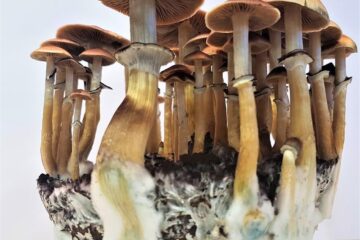New sepsis related biochips on the research market

On the occasion of the biotechnology trade fair BioTechnica in Hannover (Germany), SIRS-Lab expands its portfolio of biochips for the research market. The products of the Lab-Arraytor(R) human 60 series allow molecular investigations of specific metabolic pathways, which are related to the pathogenesis of sepsis (blood poisoning) and other inflammatory diseases.
Lab-Arraytor(R) human 60-5 enables differential gene expression studies of the complement cascade, an assembly of proteins in the blood, which is involved in the defence against infections, coagulation and, especially, in the development of inflammations. In addition to complement factors, such as the complement activation products C5a and C3a, their receptors as well as a number of enzymes involved in the complement cascade, are represented on the chip.
’By developing the Lab-Arraytor(R) human 60-5, we supply the growing need for diagnostic tools in that field of research’, explained SIRS-Lab’s Chief Executive Officer, Dr. Stefan Russwurm. As studies of prominent scientists revealed, the complement-activating C5a is strongly over expressed in patients with sepsis. ’Therapies will thus concentrate on possibilities to work against C5a’, added Dr Russwurm, who was formerly working at the clinic for anaesthesiology and intensive care at the Friedrich Schiller University in Jena (Germany), where he also treated patients with sepsis.
Lab-Arraytor(R) human 60-6 is a research tool for differential gene expression studies of Nuclear Factor kappa B (NF-kappa-B). NF-kappa-B is involved in regulating the transcription of many of the immuno-modulatory mediators involved in the development of sepsis-induced organ failures. In septic patients the concentration of NF-kappa-B is strongly increased. Besides NF-kappa-B subunits, the Lab-Arraytor(R) human 60-6 represents genes for NF-kappa-B activators and inhibitors as well as NF-kappa-B-regulated genes, e.g. interleukines.
The product series Lab-Arraytor(R) human 60 is available since April 2003. These polynucleotide-based arrays allow molecular investigations on the activity of genes for interleukines, chemokines, MAP-kinases as well as genes characterizing apoptosis, TNF- and sphingolipid pathways.
Media Contact
Weitere Informationen:
http://www.sirs-lab.deAlle Nachrichten aus der Kategorie: Messenachrichten
Neueste Beiträge

Ein neuer Blick auf die Folgen von Lichtverschmutzung
GAME-Jahrgang 2024 beginnt seine Experimente in acht Ländern. Kann nächtliches Kunstlicht Meeresalgen schädigen und deren wichtige Funktionen für Küstenökosysteme beinträchtigen? Das diesjährige Projekt des Ausbildungsprogramms „Globaler Ansatz durch Modulare Experimente“…

Wie der Schwefel in Eisen-Schwefel-Proteine gelangt
Forschungsteam klärte auf, was der Weg des Schwefels mit der Krankheit Friedreich-Ataxie zu tun hat. Das medizinisch bedeutsame Protein Frataxin sorgt dafür, dass die Herstellung von lebenswichtigen Eisen-Schwefel-Proteinen schnell und…

Ein Enzym macht Pilze „magisch“
Neue Studie gibt Aufschluss über Struktur und Evolution eines Enzyms in psychoaktiven Pilzen. Ein internationales Forschungsteam hat die Biosynthese von Psilocybin untersucht, dem Hauptinhaltsstoff halluzinogener Pilze. Dabei konnten neue Erkenntnisse…





















